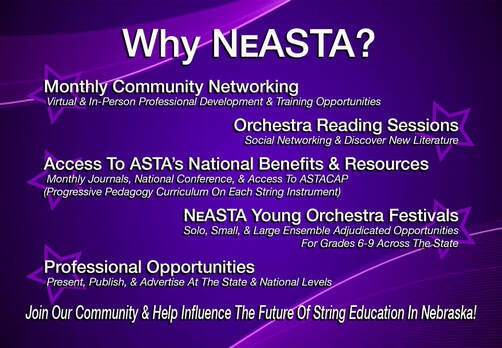
Geometric shapes games are a great tool to help children see the world from a different perspective. These games are great for improving visual skills and can also help children develop literacy and pre-math skills. These games are also a great way for kids to practice naming and identifying different shapes in different sizes.
Geometric shape games can help students see the world on a new axis.
Geometric shape games are fun ways for students to practice understanding the properties of geometric shapes. These games allow students to manipulate concrete objects to express their ideas. These games also allow students to develop their math skills by practicing with measuring tools. There are several ways to use these games in the classroom.
Two players will rotate a single wheel. Next, each player must identify which shape is associated with a particular attribute. An example of this is an arrow pointing to a trapezoid. The attribute should be correctly matched by each player. The game helps students relate properties to their shapes, and can also encourage healthy competition among students.

They help kids develop logic skills
Children can have fun with shapes and learn logical thinking by playing games. Young children will have fun putting shapes into their holes. Older children will enjoy sorting objects by their shape and row. A number series can be used to teach children how to play with numbers and how they can compare items that share the same characteristics.
The ability to play with shapes can be used to help children develop their visual discrimination. This skill will enable children to see patterns in pictures, which will allow them to identify objects within a picture. The child will learn to easily identify the objects by placing them at his or her eye level. These games will also help children improve their vocabulary and logical thinking. They can then use this knowledge to help them with more difficult tasks in the future.
They assist them in developing pre-math
Children can learn pre-mathematical skills through games with shapes, such as basic shape recognition and assignment of shapes to global objects. They can also be helpful in cognitive development. They aid children in understanding objects, space, routes and can even identify print and braille. There are many games for children that can help them learn pre-math concepts and the relationship between shapes and colors.
Use shapes to teach math concepts to your children. Children can also practice classification, such as matching similar objects to each other. These games can be enjoyed by toddlers and pre-schoolers.

They assist them in developing literacy
Games with shapes are a fun way for parents to help their young children develop literacy skills. These games will help children understand the differences between triangles, rectangles, and circles. These games are great for teaching children the alphabet letters like A, B C, C and D.
It is important to start learning literacy skills early. Before they can begin writing letters, children learn about shapes such as squares, triangles, and circles. This helps children develop literacy skills before they are ready to use them to compose words.
FAQ
How long does it take for an early childhood teacher to become certified?
To complete a bachelor's in early childhood education, it takes four years. Two years will be spent taking the general education courses required of most universities.
After your undergraduate studies are completed, you will typically enroll in graduate school. This step allows for you to specialize in one area of study.
For example you could focus on child psychology, or learning disabilities. After completing a master's degree, you can apply to teacher preparation programs.
This process may take another year. To gain practical knowledge, you will partner with experienced educators.
Final, you must pass the state exam before you can start teaching.
This process is lengthy and you will not be able instantly to enter the workforce.
What factors should I consider when choosing a major?
First decide whether you'd rather be a professional or a student first. First, make a list about your interests and talents. There are many things you might enjoy reading, listening or watching music, talking to others, doing housework, or even playing sports. You might be gifted in singing, dancing or writing. Once you've identified your interests and talents you can use them to guide you when choosing a major.
You might be interested in art history and fine arts if you are looking to become an artist. Biology could appeal to you if animals are your passion. You might consider pre-medicine or medical tech if you are interested in becoming a doctor. If you'd like a career that involves computers, you might check out computer science or computer networking. There are many possibilities. Just think carefully about what you'd like to do.
What's the difference between private and public schools?
All students can attend the public school for no cost. They provide education from kindergarten through high schools. Tuition fees are charged by private schools for each student. They provide education from preschool to college.
Charter schools can also be found, which are privately owned but are not publicly funded. Charter schools don’t follow traditional curriculum. They give students more freedom and allow them to pursue their interests.
Charter schools are popular with parents who believe their children should receive quality education regardless of their financial status.
Statistics
- Among STEM majors, that number is 83.5 percent. (bostonreview.net)
- Globally, in 2008, around 89% of children aged six to twelve were enrolled in primary education, and this proportion was rising. (en.wikipedia.org)
- These institutions can vary according to different contexts.[83] (en.wikipedia.org)
- In most developed countries, a high proportion of the population (up to 50%) now enters higher education at some time in their lives. (en.wikipedia.org)
- Think of the rhetorical power of nineteenth-century abolitionist Harriet Beecher Stowe, Martin Luther King, Jr., or Occupy Wall Street activists with their rallying cry of “we are the 99 percent.” (bostonreview.net)
External Links
How To
What is vocational training?
Vocational Education prepares students for work by giving them skills that are required for a specific job, such as welding. Vocational Education also offers apprenticeship programs that provide on-the-job training. Vocational Education is different than general education. It focuses on specific careers and not learning broad knowledge for the future. Vocational education's goal is to help students find employment after they graduate.
Vocational education may be provided at all levels of schooling, including primary schools, secondary schools, colleges, universities, technical institutes, trade schools, community colleges, junior colleges, and four-year institutions. In addition, there are many specialized schools such as culinary arts schools, nursing schools, law schools, medical schools, dental schools, veterinary medicine schools, firefighting schools, police academies, military academies, and other military schools. Many of these offer both academic instruction, and practical experience.
A number of countries have made significant investments in vocational education over recent decades; for example, Australia, Denmark, Finland, Germany, Ireland, Japan, Luxembourg, New Zealand, Norway, Poland, Sweden, Switzerland, the United Kingdom, and the United States. It is still controversial whether vocational education is effective. Some critics argue that it does little to improve students' employability; others argue that it provides useful preparation for life after school.
The U.S. Bureau of Labor Statistics estimates that 47% of American adults possess a postsecondary certificate, or degree related to current occupation. This figure is higher among those with more education: 71% of workers aged 25-29 with a bachelor's degree or higher are currently employed in fields requiring postsecondary credentials.
According to the BLS, nearly half of America's adult population held at least one postsecondary credential in 2012. One-third of Americans had a two year associate degree. Only 10% held a four-year bachelors degree. One fifth of Americans have a master's, or doctorate.
The median annual wage for individuals with a bachelor's in 2013 was $50,000. This was compared to $23,800 when they had no degree. The median income for those with advanced degrees was $81,300.
For those who did no high school, the median salary was only $15,000. Earn $13,000 per annum for those with less high school diplomas.